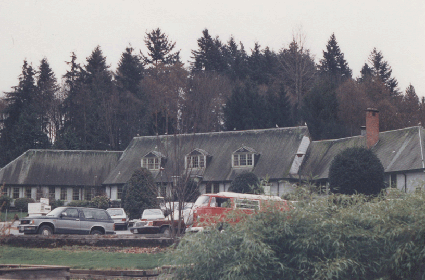
Max’s predecessor, Beanie, was a gentle dog. Throughout Beanie’s life, we had a love affair with the George Derby War Veterans’ Centre, where we served as Pets and Friends volunteers through the program founded by the SPCA. Beanie was eight years old when we began at the Derby Centre, and we continued there for five years, only stopping when she developed a heart condition that made the long outings too tiring for her. Her time there covered the transfer period to the new facility that was built in 1987. Beanie even got to ride on the bus and take part in moving day. I could write a book on our experiences there and all the wonderful men we met during those years, but that’s another project. However, some background is warranted.
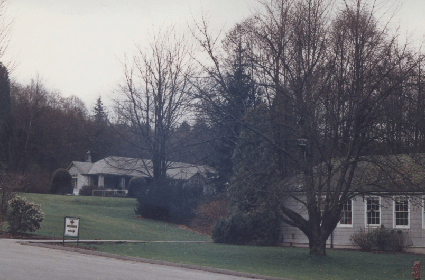
The original George Derby Centre was built in 1946 as a rehabilitation centre for disabled veterans returning from the war. Named after George Cleveland Derby, a First World War veteran who was awarded the Order of the British Empire for his patriotic and philanthropic work, the facility provided a home for veterans and assisted their return to community living. The original centre was a fenced compound, nestled in a large tract of woodland, and comprised of a series of buildings surrounded by spacious grounds, which encompassed gardens, fields and horseshoe pits. The buildings were connected by paved pathways, and the stroll between each one was picturesque and enjoyable.
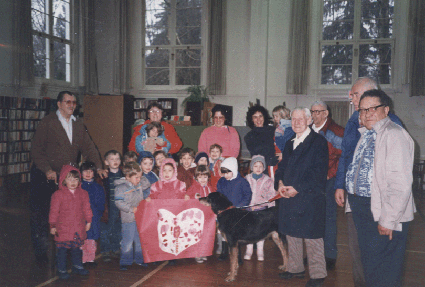
There was an administration building, which contained a vast, high-ceilinged auditorium for special events, and a games room with full-sized snooker tables. There was a separate crafts building with equipment for pottery, painting and weaving. Then there were pavilions with the living quarters for the men. These resembled army huts. The men’s rooms, screened off by curtains, stretched along either side of a corridor that ran from one end of the building to the other. The layout made it ideal for Pets and Friends visiting, since Beanie enjoyed a run in the woods on her way to the centre, and once there, had ample outdoors time between buildings. The pavilions made for easy visiting too, as we could come in one door, proceed straight down to the exit door and see all the residents along the way.
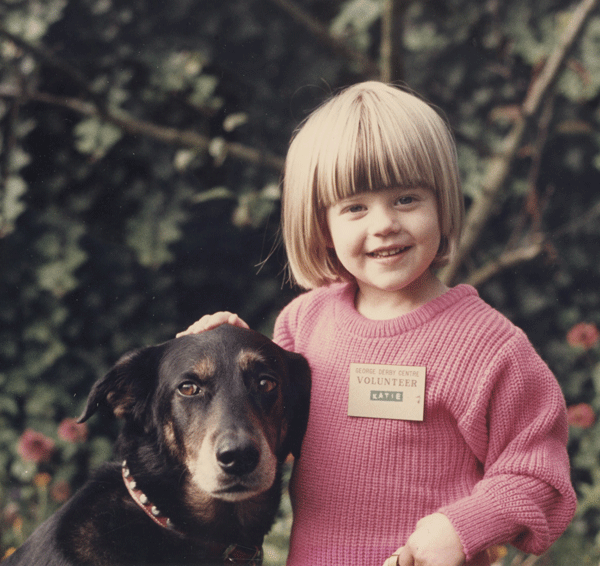
We were quite the hit on our visits, because those who loved dogs were delighted to see Beanie, but others were thrilled to talk with Katie, who seemed to assume that she had acquired a vast number of additional grandfathers. Considering the indulgent way the men treated her, it wasn’t such a bad assumption. On her third birthday, she proudly brought her new Barbie doll to show the men, and when we returned to the administration building at the end of our visit, we found her stroller decorated with Happy Birthday balloons.
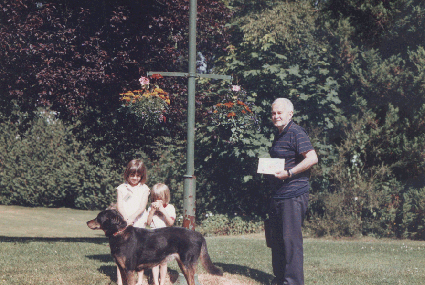
Both my daughters enjoyed talking with the veterans. Katie was refreshingly direct with them, and would begin conversations with amputees by saying, “That bad owie.” Caroline, who was already in grade one, only got to come along on professional days, but she would roar through enthusiastically, insisting that we had to talk to everyone, even if she had to wake up the ones who were having a nap. We referred to her as “Shake and Wake Caroline” and the staff decided she had the makings of a good nurse.
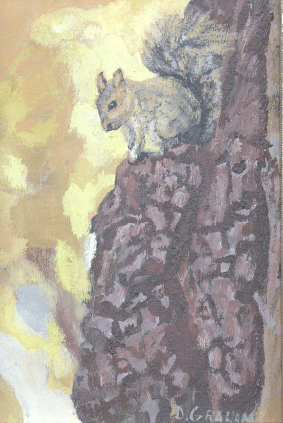
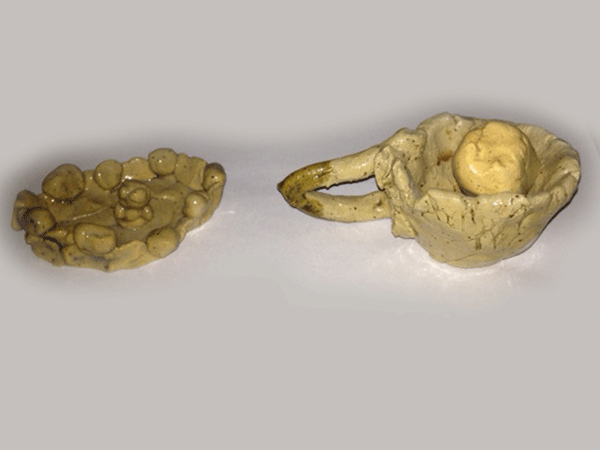
Both girls were fascinated by the craft rooms. They tried pottery with Stan, discussed painting with Mr. Graham, and learned about weaving from Homer or Gerry, the latter, a quietly charming man who had survived being a POW in a Japanese camp. Jimmy and Scotty were also favourites, always with candy in their pockets for the girls, cookies for Beanie, and lively anecdotes for me, although Jimmy would occasionally elicit scowls from Katie when he greeted her with a boisterous rendition of “K-k-k Katie, beautiful Katie!” The men’s stories were as varied and fascinating as their experiences. One handsome, upright gentleman, whom I’d assumed was only in his seventies, turned out to be a veteran of the Boer War! Our visits were educational for me, as well as for the girls: a wealth of information from the livelier residents, and a lesson in the importance of patience and compassion from those who were not in good health or who had trouble communicating.
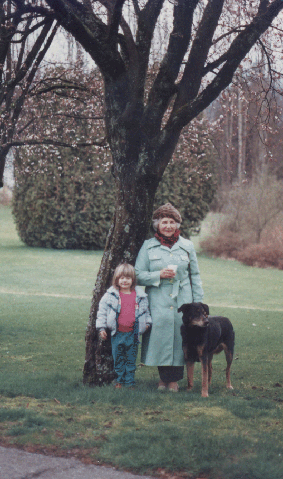
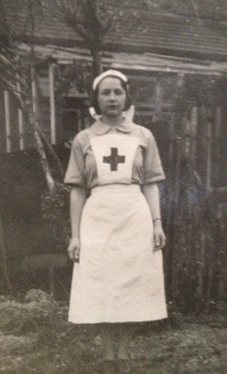
Over the years, our whole family got to meet the men. My mother had been a VAD in London during the Blitz, so she was welcomed warmly when she accompanied us. If I brought Hugh along, he would head for the snooker tables and enjoy a game with the resident pool sharks. Glossy, black Georgina even got in on the act, coming along one Halloween when the girls and I were dressed as witches. Beanie looked cute in her cat hat, but we needed a real feline to complete our ensembles. The men enjoyed having a visiting cat, even though Georgina was indifferent to their attentions, being more interested in the abundance of fish tanks around the facility.
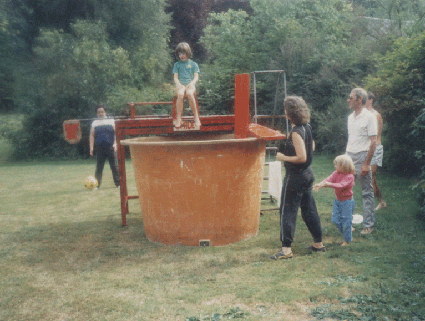
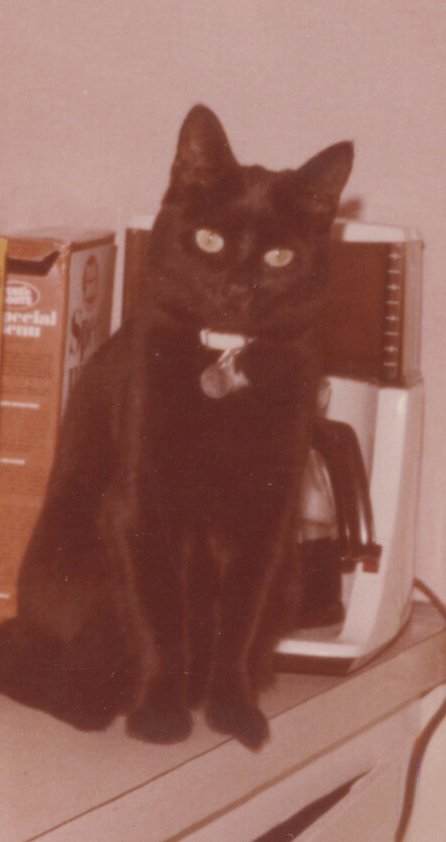
We loved the special occasions. Sports day was a riot, with a BBQ lunch, a dance in the auditorium, an Olympic torch, and Frisbees and lawn darts taking the place of discus and javelin. Caroline, always ready to participate, teamed up with Stan, holding his stick while he threw his dart, then returning it to him so she could take her own turn. Having tried every event, she then volunteered to sit in the dunk tank, and swam around like a little fish every time she was knocked in.
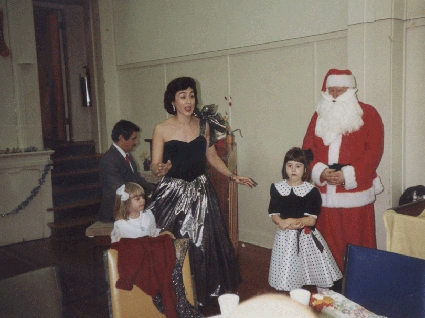
Also great fun were the tea dances, where all the old favourites from WWII were played. The men gallantly took turns holding Beanie so that the girls and I could dance with them, and Caroline and Katie often helped to serve the food. The girls were happy to sit with the men and supervise Beanie if I was asked to sing—except for one memorable Christmas party when Caroline decided she wanted my attention mid-number and Santa had to come to the rescue to prevent me from being distracted. I still cherish the Santa-is-sternly-watching-you photo that one staff member took on that occasion.
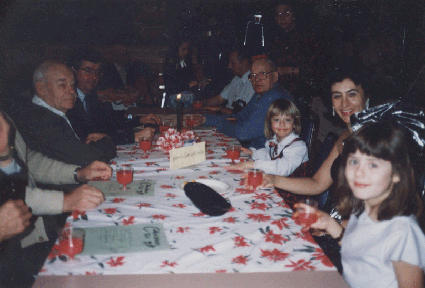
The move to the new centre in 1987 was a mixed blessing. There was no doubt that the new facility was going to provide far better personal quarters for the men, for now they would have individual rooms in a proper residence. The downside was the loss of the vast parkland, smaller communal facilities, and a much larger number of residents. Even though most of the men were looking forward to the move and considered the new facility long overdue, many suffered anxiety over the change, and it was sad reality that several men died during the year of the transfer. One week, we ended up making our visit at Shaugnessey Hospital in Vancouver, because so many of our friends had been transferred there due to ill health. It’s a mark of their strong personalities that I can still visualize those men, even after so many years: Mr. Dundas, a thin, quiet man who always seemed pleased to see us; Lionel who said very little, but never failed to slip Katie a sweet; friendly Mr. Bell, who would engage Katie in earnest conversation; Howard, the one black resident, a sad, troubled man who never talked, but who always reached out to pat Beanie when we stopped to say hello; and John, an odd little man with a puckish face and spiky hair, who had up and down moods that made me unsure whether he wanted to see us or not, yet who always had something for Katie, as well as for Beanie. After John died, I was informed that he had referred to Katie as his granddaughter. There were sad times at the centre alongside the good times, and the year of the move was one of many losses.
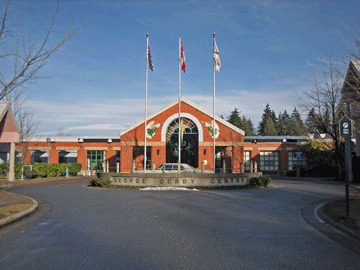
From the perspective of a visitor with a dog, the new facility seemed busy and bustling, and locating our friends was more difficult. Beanie, who was aging, was visibly tired at the end of our visits, especially as there were so many more residents who wanted to see her. However, she valiantly persevered, although, as her health declined, I had to limit the time she spent there. We continued for another two years at the new centre, but I finally had to retire her. It was timely. Our wonderful volunteer supervisor, Shirley Conlon, who had initially welcomed us to the centre, had now retired, and most of the men we had befriended in the early years had passed on. However, one of our favourite veterans was still there. This was Joe, an active WWII vet who looked after the unofficial resident cat, helped out at events and always had the inside story on what was happening. Joe was the veteran who had arranged for us to bring our early production of Babes in the Wood to the Derby Centre, and he had been in proud attendance, some years later, when we brought the show to the Shadbolt Arts Centre. Joe and I had kept in touch, on and off, after I retired as a volunteer, and he was disappointed to hear that my new dog did not have the temperament to take over where Beanie had left off. However, even if Max was too boisterous and unpredictable to be a Pets and Friends dog, I decided the least he could do was go round to meet Joe.
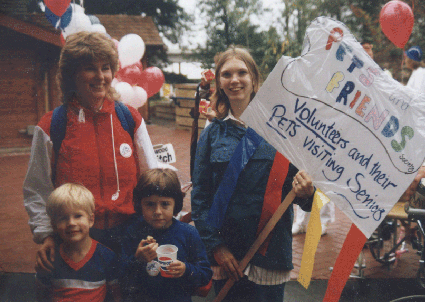
I phoned Joe to arrange our visit, not just to discuss a mutually convenient time, but also because I could no longer march through the main entrance, given that Max was not an approved visitor. The staff at the new centre was very picky about things like that, and one bossy supervisor in particular had made it quite clear that dogs weren’t welcome on the property unless they were part of the facility’s programming. Joe was delighted to hear we were coming, and he proceeded to plan our visit like a military operation. The war vets were great fun that way. Circumventing the rules and getting one up on the staff was a prime entertainment. Whenever the fire trucks roared down 16th Avenue, we always figured it was just one of the vets smoking in his room again, and I always got a laugh out of the notices on the bulletin boards, such as directives banning speeding in the corridors with the wheelchairs. Since Shirley Conlon was no longer there to vouch for us, I agreed with Joe that discretion was called for. He assured me there would be no problem as he had a corner room next to an exit that was screened from the front entrance.
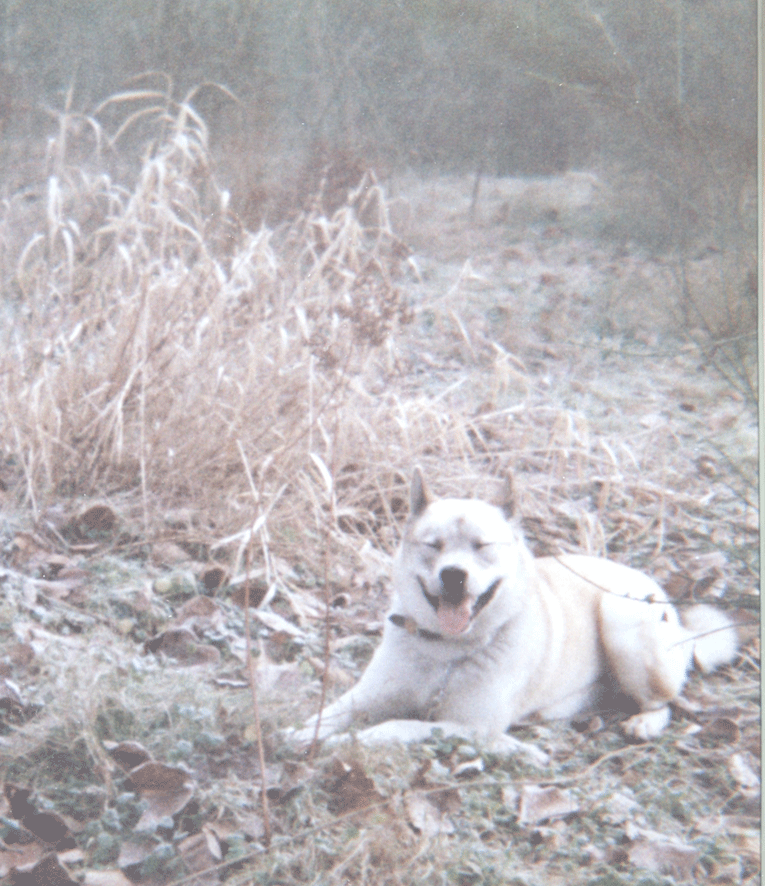
On the day of our visit, I walked Katie to school, and then continued on with Max until I reached the woods. The new hospital had been built adjacent to the former one through another land exchange, and the housing developments slated for the old grounds had not yet been started, so much of the surrounding forest was still in place. The fields also remained, although now overgrown into rough meadows. Below the old grounds, trails stretched down to the Freeway. This woodland was another area that nature had reclaimed, for in the early part of the last century, houses had stood there. The trails were reminiscent of a deserted village, with the odd apple tree, building foundation or lamppost emerging from the ground cover to remind walkers of what had gone before.
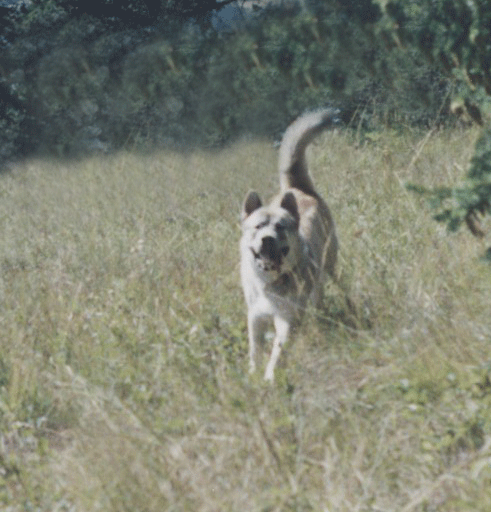
It was a bitterly cold day, and I wanted to burn off some of Max’s energy before we reached the Derby Centre, so we took the long route around the trails. We emerged from the woods at the point closest to the corner where Joe’s room was situated. I leashed Max, avoided the driveway, and strolled across the grass. Then I knocked on Joe’s window, and he slipped round to let us in the side door. Joe was delighted to meet Max, and Max seemed equally delighted to make a new friend. He settled happily in Joe’s room, probably encouraged by the fact that Joe still had the cookie box that Beanie had loved so much, not to mention the elusive smell of cat that hung in the air. Joe assured me that the cat would stay in hiding until Max left, and he gave Max treats and made a big fuss of him. Then Max, reverting to best-boy-in-the-class, sighed, flopped onto his side and promptly went to sleep, thus enabling me to have a cup of tea with Joe and a lovely reminisce about old times.
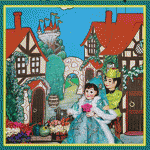
When Max woke up, he was still in ho-hum mode, so Joe urged me to try taking him out into the corridor so the other men could see him. Apprehensively, I agreed, and keeping a watchful eye out for roaming staff members, we ventured forth and took Max to see some of our old friends. To my delight, Max behaved in exemplary fashion. All those men, and not a single cower! Max might be racist, sexist and anxious, but obviously war veterans were exempt from his prejudices. The men seemed delighted to see us. Mr. Brady, another of our old favourites, sent me home with chocolates for the girls, and Murphy, who had never been that partial to dogs, beamed when we appeared. It was a lovely afternoon. I had a sense that Beanie was trotting along beside us, perhaps because she was so dearly remembered by the men. So, egged on by a contingent of vets with a we-didn’t-take-on-the-Germans-just-so-we-could-wimp-out-before-a-bunch-of-government-employees attitude, we made our way through the northwest wing. However, I didn’t want to push my luck, so once we reached the next exit door to the garden, we said our farewells and headed for home.
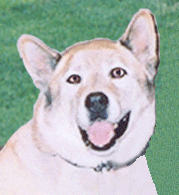

That afternoon with Joe is a very special and treasured memory. Sadly, because of Max’s increasingly unpredictable nature, I was never able to make him a regular visitor at the centre, even though he had managed well on that first occasion. Pets and Friends was not for him. It was Beanie’s job, an activity that made her feel important and gave her a sense of purpose. Max needed a sense of purpose too, but it wasn’t going to develop through any of the traditional programs. However, he was going to find his niche; it was just going to take a very different turn.
Next: A momentous day in Max’s life.
